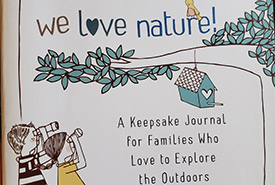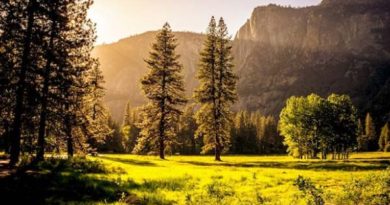Our National Parks Have a Popularity Problem

Known worldwide for its thermal features and wildlife, such as wolves, Yellowstone National Park will mark its 150th anniversary in 2022. In 2021, about 4.9 million people visited the park, breaking the prior record set in 2016.
Let’s step into the Wayback Machine and go to 2015, just six years after producer Ken Burns’ documentary miniseries The National Parks: America’s Best Idea had aired on PBS in 2009. At that time, I wrote to you about the overcrowding in our national parks—in part due to that widely popular TV program. Little did I or any of us realize that five years later, in 2020, a worldwide pandemic would make those parks even more necessary and sought-after.
In fact, in the aftermath of the COVID-19 lockdowns, so many of us ran to the national parks for solitude, solace and a safe vacation, that they—and the way that they are managed—will be changed forever.
How have they been irrevocably altered? And, how should we handle all that newfound—again—national park love that we’re feeling?

Glacier National Park will ask day-use visitors to have a reservation to drive the Going-to-the-Sun Road from May 27 through September 11, 2022. The reservation system will open in March.
Resolving by reservation
When COVID-19 regulations began to ease in the summer of 2021, we flooded our national parks. According to the National Park Service, 44 parks set a record for recreation visits last year. For example, Great Smoky Mountains National Park passed 14 million for the first time, 1.5 million more visitors than its previous record in 2019 and a 57 percent increase in visitation from a decade ago. Yellowstone National Park broke its record with 4.9 million visits. Zion National Park, formerly the nation’s third-most-popular park and now the second, broke records with 5 million visitors in 2021, making it the fourth national park to ever reach that number.
Such love has forced the National Park Service to implement some unpopular but necessary solutions. One way that parks are currently curbing congestion is by instituting timed-entry systems. These nine national park units now require reservations for entry or to access certain routes:

Hikers in Zion National Park will now need to obtain permits to visit the 1,488-foot Angels Landing. Permits (which cost $6.00) can be applied for via online lotteries, with a few offered the day before visits. The program will run through at least February 2023.
Not everyone is a fan of the reservation solution, however. Some park visitors have been dismayed to find that after traveling thousands of miles and spending sums of money on lodging fees, they are denied access to the park because they failed to secure a reservation. And, accessibility advocates note that advance reservation systems favor people with money, reliable internet service and time. That means that it’s harder for marginalized groups—that already have less access to nature—to visit our shared national parks.
Catering to crowds by creating more
Another suggested answer to the overcrowding problem in our national parks is simply to make more of them.
Opponents of this idea, though, point out that having more national parks won’t work if there’s still a lack of funding for the ones we already have. Instead of designating more parks, they say, Congress should increase monetary support for them to help mitigate the damage from overcrowding. That money could be used to hire additional staff to control and educate crowds; to implement shuttle systems, such as the one at Zion National Park that is effectively reducing traffic; and to build more campgrounds and toilets inside or outside park boundaries.

The sound of elk bugling is one of the top highlights for any visitor to Rocky Mountain National Park.
Fortunately, Congress has recently begun to propose and pass new laws and pilot programs aimed at reducing overcrowding and its effects. The Great American Outdoors Act and the Land and Water Conservation Fund is chipping away at the National Park Service’s deferred maintenance backlog. And, a joint agreement between the Department of the Interior and the Department of Transportation—with funding from last fall’s infrastructure bill—is now helping to add more electric shuttle buses and rideshare locations to our national parks, and to develop an app that will notify park visitors about parking availability and road closures.
Setting up quiet zones for saving natural sounds
While the emphasis on the national park overcrowding issue has usually been on physical space—where to put all the people and where to park—I also wonder how we can better prepare for the impacts that increasing numbers of visitors will have on our “inner spaces”: what more people will do to park soundscapes.
Iconic sounds are associated with specific parks. Who can think of Yellowstone National Park without thinking of the sound of wolf howls on the wind? Or who can reminisce about Rocky Mountain National Park without imagining the bugle of elks? And the sound of silence in Glacier Bay National Park is intrinsic to every stay.

In recent years, there has been an upsurge of interest in the auditory aspects of wild nature in national parks. Glacier Bay National Park may be the premier location for Alaska’s heritage of wild sounds—and its silences.
Anthropogenic noise—noise caused by human activities—masks natural sounds important to both park visitors and wildlife. Not only does noise take away from our personal experiences of the parks, but it also has significant ecological consequences. Survival for many animals depends on listening for approaching predators, and successful breeding for some species hinges on listening for the song of a potential mate.
In 2019, a team of scientists from Colorado State University and the National Park Service characterized the predominant human noise sources in 66 national park units to help them better manage noise problems. They processed 46,789 hours of audio clips from 251 sites in the 66 chosen parks. The research team then identified how frequent noise events were, what type of noise is most heard and how loud the noises are compared with measured noise levels across the continent.
The scientists found that while anthropogenic noises caused a 10-fold-or-greater increase in natural background sound levels in more than a third of parks in the study, the acreage impacted by such levels represents less than 2 percent of the total parklands. Recreational watercraft and trains were by far the loudest sources of noise, but the greatest amount came from aircraft and vehicles.

In 2018, Muir Woods National Monument became the first National Park Service unit to implement a permanent reservation system. Its purpose was to reduce stress on the redwood forest ecosystem and improve visitors’ experiences. ©Matthew Dillon, flickr
This means that human-made noise is loud but localized within large parks, pointing to places where managers can focus their efforts on reducing sounds. For instance, to mitigate vehicle noise, parks could make more allowances for electric vehicles, establish speed limits, incorporate shuttle systems and use quiet pavement materials on roads. Aircraft noise, which can be heard from great distances at quiet sites, can be diminished by routing or scheduling flights to avoid sensitive areas.
This research was published in 2019, prepandemic. I wonder what all the added human noises today are doing to our parks’ soundscapes. Of course, visitor conversations and speaking with and learning from park rangers are fundamental to any park visit. Yet, even when appropriate to the setting, these sounds can negatively affect wildlife. The designation of “quiet zones” can markedly improve noise levels, as successfully demonstrated in Muir Woods National Monument’s Cathedral Grove.
Pursuing their own paths
In 2015, when I first wrote that article about the increasing numbers of people in our national parks, I knew that we were on an uphill trajectory that probably wouldn’t abate anytime soon. But what I didn’t know is that those figures would skyrocket so precipitously in response to a world that would become so worrisome beginning in 2020.

Beginning on May 20, 2022, day-use or overnight reservations will be required to enter Yosemite National Park from 6:00 A.M. to 4:00 P.M., Pacific Standard Time.
Our national parks, though, have endured for 150 years, starting with the first, Yellowstone National Park, designated in 1872. So, I’m positive that each one of them will find their own specific, innovative and unique ways to protect themselves from development, land conversion, pandemics—and our own overzealous love.
Here’s to finding your true places and natural habitats,
Candy
P.S. For more information on our national parks’ reservation systems, visit nps.gov or recreation.gov. Better yet, avoid the scheduling headaches and sign up for one of Natural Habitat Adventures’ national park tours.
About the author: Candice Gaukel Andrews View all posts by Candice Gaukel Andrews
A multiple award-winning author and writer specializing in nature-travel topics and environmental issues, Candice has traveled around the world, from the Arctic Circle to Antarctica, and from New Zealand to Scotland’s far northern, remote regions. Her assignments have been equally diverse, from covering Alaska’s Yukon Quest dogsled race to writing a history of the Galapagos Islands to describing and photographing the national snow-sculpting competition in her home state of Wisconsin.
In addition to being a five-time book author, Candice’s work has also appeared in several national and international publications, such as “The Huffington Post” and “Outside Magazine Online.” To read her web columns and see samples of her nature photography, visit her website at www.candiceandrews.com and like her Nature Traveler Facebook page at www.facebook.com/naturetraveler.




